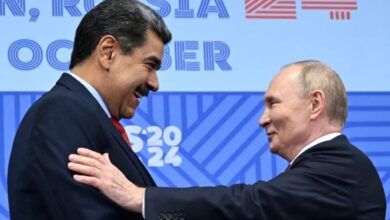The alternative model to the G7 promises to revolutionize the world economic order. What is the outlook for the BRICS in the coming years?.

Photo: Alan Santos/PR
LatinAmerican Post | July Vanesa López Romero
Escucha este artículo
Leer en español: ¿Los BRICS podrían llegar a derrocar al G7?
In 2001, British economist Jim O'Neill made use for the first time of the acronym BRIC which, by then, referred to 4 countries whose weight in the world economy would grow exponentially over the next ten years: Brazil, Russia, India, and China. The S, to refer to South Africa, was added in 2010, when the country achieved the best economic performance in the Global South, according to the Oxford Department of International Development. O'Neill predicts that the GDP growth of the BRICS, especially that of China, would exceed that of the G7, so they should be incorporated into the forum in the next few years, which has yet to happen.
Origin and Expansion of the BRICS
This acronym, which initially referred to countries with emerging and potential markets, brought them together to act in a common interest. The first official meeting was held in 2006, within the framework of the 61st General Assembly of the United Nations. Three years later, in 2009, the first BRIC Summit was held in Russia, and since then, the summit has been held annually behind closed doors.
Its main objectives are to incorporate joint projects to "strengthen and develop trade relations," to negotiate among themselves with local currencies, and in that sense, to reduce dependence on the US dollar. The Contingent Reserve Arrangement (CRA), a liquidity mechanism to support member countries with international debt payment difficulties, was also implemented.
In 2014, the BRICS signed an agreement to form the New Development Bank, an alternative to the World Bank (WB) and the International Monetary Fund (IMF). The initial capital was US$50 billion. These alternatives are attractive to other countries with emerging economies facing IMF austerity and structural adjustments since, by joining the BRICS, they would not have to rely exclusively on these traditional institutions.
It may also interest you: US Reaches Out to China: Taiwan Stands Alone?
At the beginning of June, a meeting was held between the BRICS foreign ministers focused on their expansion. Before this, 19 applications were received from different countries wishing to join the group. Mexico, Algeria, United Emirates, Saudi Arabia, and Nigeria are some of these.
What is Your Outlook for 2050?
The latter demonstrates the influence that the BRICS have achieved. Note that China is currently the second largest economy in the world; India the fifth; Russia the eleventh; Brazil the twelfth; and South Africa the thirty-second. In addition, these economies are constantly growing due to their population capacity. Today they represent 40% of the world's population. However, of the countries, China has only shown exponential growth since the creation of the BRICS.
On the other hand, its members affirm interest in accepting other countries into the group, but admission criteria must be defined. This will be discussed at the next summit, scheduled for August of this year.
While these reasons mean that the expansion of this group will increase over the next three decades, and eventually, the BRICS could become the new world economic order because of its potential, the current situation with Russia's invasion of Ukraine could hinder this. Since the conflict broke out, there has been no support or sanctions from the incorporated countries. Moreover, trade relations between India and Russia or Brazil and Russia did not stop. They have increased in the last year. As a result, the gap between the BRICS and the West grew.
According to Günther Maihold, deputy director of the German Institute for International and Security Affairs (SWP), the BRICS should not be seen as an anti-Western group. For him, India, Brazil, and South Africa have national interests and seek to move between two worlds and make the best decisions for their economic growth from a distance.
The G7 also changed its strategy and invited India and South Africa to its summit last year to avoid the prospect of a confrontation between the two groups. This shows that the steps being taken on both sides are, above all, cautious. The current global economic situation warrants it.





